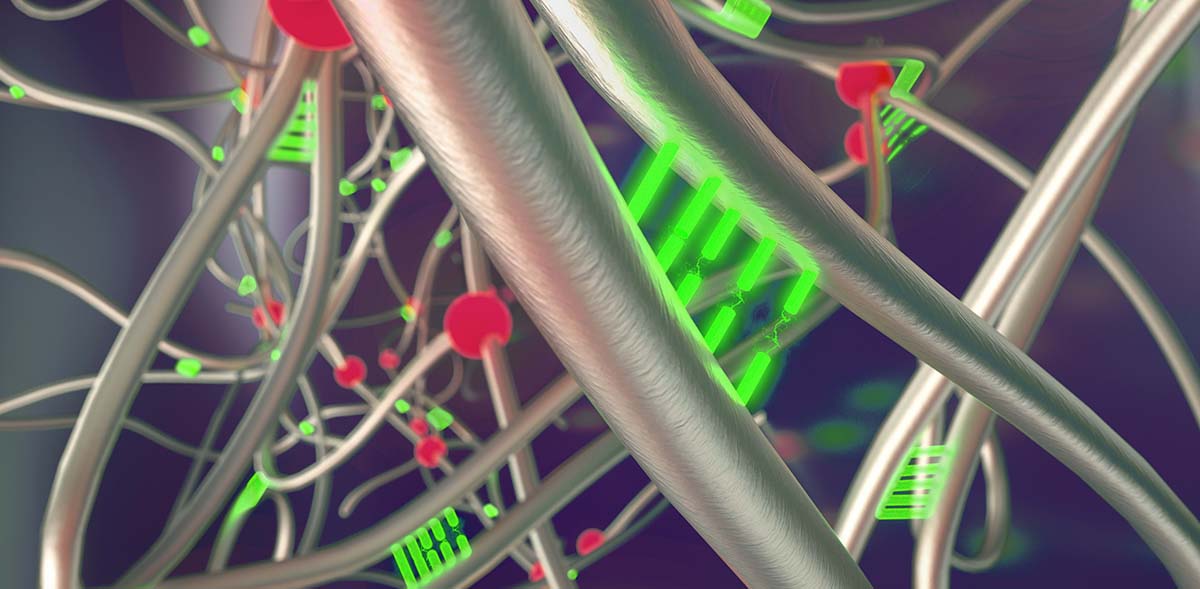One problem with tires is that they are not as durable as we would like. We would like them to last forever but they are prone to wear and tear and are vulnerable to punctures. A tyre that could heal after a puncture would be a real technological breakthrough. Researchers from Harvard’s Wyss Institute for Biologically Inspired Engineering and the Harvard John A. Paulson School of Engineering and Applied Sciences (SEAS) have highlighted the development of a new type of rubber that is as tough as natural rubber and also has the capacity to self-heal in an article they published in Advanced Materials.
While self-healing hydrogels had been developed earlier at SEAS, developing dry materials which have self-healing properties was quite a challenge. Self-healing hydrogels use water having reversible bonds to promote healing. Rubber, though, is made up of polymers which are linked through strong and permanent covalent bonds, which cannot reconnect once they are broken. To make rubber self-healing, the team of researchers needed to make the bonds connecting the polymers reversible, so that the bonds could reform after being broken.
Li-Heng Cai, Ph.D., a Postdoctoral Fellow at SEAS and one of the authors of the research paper said that earlier scientists had used reversible hydrogen bonds to connect polymers to form a rubber. But these reversible bonds were intrinsically weaker than covalent bonds. He collaborated with Jinrong Wu, Ph.D., a visiting Professor from Sichuan University in China, and senior author of the study, David A. Weitz, Ph.D., Wyss Institute Core Faculty member and Mallinckrodt Professor of Physics and Applied Physics at SEAS, to devlop a hybrid rubber having both covalent and reversible bonds. Cai came up with the theory of mixing both covalent and reversible bonds to make the self-healing rubber but the feasibility of such a product was doubtful as normally covalent and reversible bonds don’t like to mix, just like oil and water.
The researchers finally came up with a molecular rope that could connect both these kinds of bonds. Called randomly branched polymers, this molecular rope allows two bonds that were previously unmixable to be mixed homogeneously on a molecular scale. This is how they were able to create a transparent, tough, self-healing rubber.
Normally, rubber cracks at certain stress points when force is applied. This is not true in the case of the hybrid rubber that the researchers developed. When it is stretched, it develops so-called crazes or cracks connected by fibrous strands throughout the material. These crazes serve to redistribute the stress to avoid the formation of a localized point of stress that can cause catastrophic failure. When the stress is released, the material snaps back to its original form and the crazes heal.
Harvard’sOffice of Technology Development has already filed a patent for the technology and is trying its best to commercialize the technology as the self-healing ability can be of wide use in the case of a number of rubber products.
Wu said that if this material is used as one of the components of a rubber tyre, even if the tyre suffers a puncture, it would not need to be replaced immediately. It would self-heal and there would be ample time for the motorist to replace the tyre.
“There is still a lot more to do,” said Weitz. “For materials science, it is not fully understood why this hybrid rubber exhibits crazes when stretched. For engineering, the applications of the hybrid rubber that take advantage of its exceptional combination of optical transparency, toughness, and self-healing ability remain to be explored. Moreover, the concept of using molecular design to mix covalent and reversible bonds to create a homogenous hybrid elastomer is quite general and should enable development of tough, self-healing polymers of practical usage.”

















